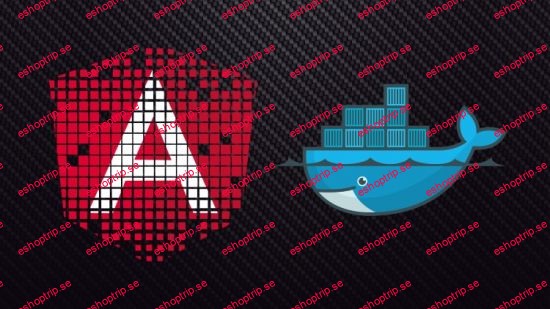Published 4/2024
MP4 | Video: h264, 1280×720 | Audio: AAC, 44.1 KHz, 2 Ch
Language: English | Duration: 35m | Size: 223 MB
Compact course about working with Docker and Angular
What you’ll learn
Setup a new Docker environment
Build a basic Angular Application
Move DB and Frontend into containers
Wrap Docker containers into the Compose
Setup a proxy with HaProxy
Requirements
Basic Angular knowledge, Using terminal
Description
Angular and Docker are top-notch technologies these days.
When we create a new Angular application, we have to solve the problem of publishing it.
Docker is the best choice for the publication because it provides a flexible and portable environment for any app.
In this course, I will show you a super effective way to publish an Angular application. I will also use HaProxy, the best solution for creating web proxies without any pain.
Docker is a platform that allows developers to develop, ship, and run applications inside containers. Containers are lightweight, standalone packages that contain everything needed to run a piece of software, including the code, runtime, system tools, and libraries.
Why do we use Docker?
Some key benefits of Docker include
1. Portability: Containers can quickly move between different systems and environments, ensuring consistent behavior.
2. Isolation: Each container runs in an isolated environment, which helps avoid conflicts between applications and their dependencies.
3. Scalability: Docker makes it easy to scale applications horizontally by running multiple instances of a containerized application across different machines or servers.
4. Efficiency: Containers are lightweight and share the host system’s OS kernel, requiring fewer resources than traditional virtual machines.
Overall, Docker has revolutionized how developers build, ship, and deploy applications by making the process more efficient, consistent, and reliable.
Why do we like Haprox?
HAProxy, which stands for High Availability Proxy, is a popular open-source software solution for load balancing and proxying TCP and HTTP-based applications. Here are some of the key benefits of using HAProxy
Load Balancing: HAProxy distributes incoming traffic across multiple servers, ensuring no single server is overwhelmed with requests. This helps improve application performance, reliability, and availability.
High Availability: HAProxy supports active-passive and active-active high availability configurations, ensuring your applications remain accessible even if one or more servers fail.
SSL/TLS Termination: HAProxy can handle SSL/TLS termination, offloading the encryption and decryption process from backend servers. This helps to reduce the CPU load on the servers and simplify the management of SSL/TLS certificates.
Content Switching: HAProxy can inspect incoming traffic and make routing decisions based on various criteria, such as URL, HTTP headers, and cookies. This allows for more flexible and dynamic traffic routing strategies.
Health Checking: HAProxy continuously monitors the health and availability of backend servers using configurable health checks. Unhealthy or failed servers can be automatically removed from the load-balancing rotation, ensuring that only healthy servers handle traffic.
Compression and Caching: HAProxy supports content compression and caching, helping to reduce bandwidth usage and improve web applications’ overall performance.
Logging and Monitoring: HAProxy provides detailed logging and monitoring capabilities, allowing administrators to monitor traffic, troubleshoot issues, and gather insights into the performance and health of their applications.
Scalability: HAProxy can handle many concurrent connections and requests, making it suitable for high-traffic and large-scale applications.
Flexibility: HAProxy is highly configurable and supports various deployment scenarios, making it a versatile solution for multiple use cases and environments.
Overall, HAProxy offers a robust set of features and capabilities that help to improve the performance, reliability, and scalability of applications while providing flexibility and ease of management for administrators.
Follow me in this compact and comprehensive course!
Who this course is for
Beginner and Intermediate Angular developers
Homepage
https://www.udemy.com/course/angular-publish-docker










